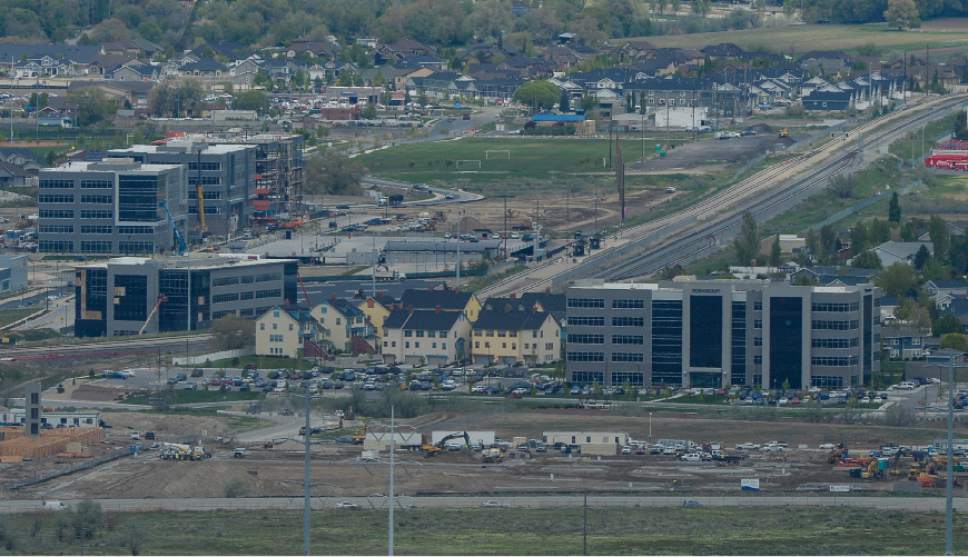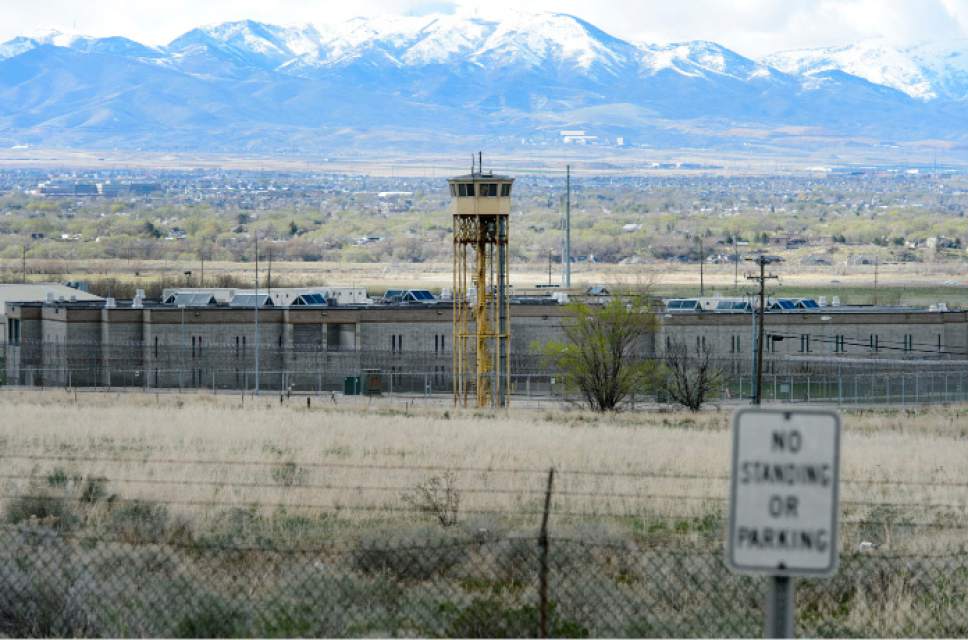This is an archived article that was published on sltrib.com in 2017, and information in the article may be outdated. It is provided only for personal research purposes and may not be reprinted.
Unless current trends and practices change, officials say Point of the Mountain will be a mess by 2050 — with traffic often at a standstill amid a crowded mishmash of developments that missed opportunities to attract world-class businesses and jobs.
"We will not be fully competitive as a state in high-tech if we create a place that may just be business as usual," Robert Grow, president and CEO of Envision Utah, warned the Point of the Mountain Development Commission on Thursday.
"We need to do some things that are really powerful as attractive for business that brings those jobs that our kids and grandkids will want and need," he said.
Envision Utah researched how the area will likely look if current trends, zoning and policies continue. In coming months it will offer alternatives for improvements to help guide growth as the state plans to move the state prison from the area, which is expected to trigger extra growth.
The "baseline scenario" released Thursday is "to flag the issues and problems now" to seek improvements, Grow said. It projects that Point of the Mountain will be packed with 220,000 new people by 2050, and 180,000 more jobs.
Even then, it won't handle all of its demand for jobs and homes unless changes allow higher density development than has traditionally occurred in the area, said Ari Bruening, chief operating officer of Envision Utah. Without higher density, homes there also would be more expensive.
Envision Utah's report said because of all that and because Utah's skilled workforce is limited, "many companies [would] choose other states or countries when expanding or relocating" instead of the Silicon Slopes area around Point of the Mountain.
The baseline scenario assumes that all now-planned transportation projects will be built — but excluded any that do not have identified funding, such as expanding TRAX light rail lines or bus rapid transit into the area.
Even with new Interstate 15 interchanges, extension of the Mountain View Corridor freeway and adding other local highways, "We're still going to have congestion issues," said Salt Lake County Mayor Ben McAdams, a member of the commission authorized by the Legislature.
Bruening also said under current transportation plans, freeways would often act as local arterials in the area — with residents hopping on them for an exit or two for short trips because of a lack of other roads.
"It's a disaster," McAdams said about what traffic projections show for the area. "Residents would be outraged."
He hopes to encourage, for example, development scenarios to allow more homes nearer to jobs in that area to reduce commutes and traffic — perhaps with more town homes than sticking with traditional large-lot single-family homes.
"We can change the housing mix and get the jobs closer to where people are, and reduce the need for transportation," he said. "That seems like the easiest one because it doesn't cost taxpayers anything."
But, he added, "transit has to be part of the development of this area."
Similarly, Sandy Mayor Tom Dolan, another commission member, said of the coming growth, "We have to convince the public this is real, and they have to be more supportive of more transportation, public transportation and higher densities in the community that were not acceptable for many, many years."
Lehi Mayor Bert Wilson warned, "If we don't take care of it today, our kids and grandkids won't even have a future."
'This growth is coming," Grow said. "The only question is can we help it grow better so that the quality of life and jobs we want to create will come."





